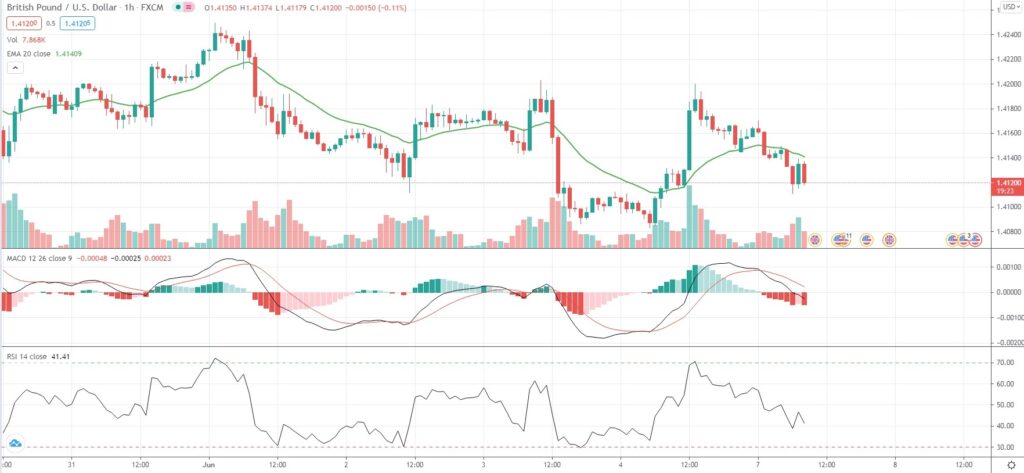GBP/USD was a notch weaker at the start of the new week as doubts emerged that the British government would stick to its plan to entirely lift coronavirus-related restrictions on June 21st.
Hopes of a rapid re-opening of the UK economy seemed to have waned in recent weeks due to a surge in cases of the delta COVID-19 variant that was first detected in India.
According to British health minister Matt Hancock, it is still “too soon” to say if the June 21st plan could proceed.
Meanwhile, after its Friday retreat, the US Dollar stabilized on Monday against a basket of six major peers, with the DXY being up 0.10% to 90.224. Friday’s losses came on the back of a softer-than-anticipated US Non-Farm Payrolls report, while market focus now shifts to this week’s key CPI inflation data which may add to the case of monetary stimulus tapering.
Employers in all sectors of the US economy, excluding the farming industry, added 559,000 jobs in May, which compares with a median analyst estimate of 650,000. At the same time, the US jobless rate slipped to 5.8% in May from 6.1% in April.
“Friday’s slightly softer-than-expected U.S. May employment numbers stand to set the tone for the weeks ahead,” ING Bank analysts wrote in an investor note, cited by Reuters.
“This provides the excuse for the (U.S. Federal Reserve) to say that substantial progress towards its goals has not been achieved and to defer the tapering debate a little longer.”
The Federal Reserve is maintaining interest rates close to zero and makes $120 billion in monthly bond purchases to suppress financing costs and stimulate economic growth. The most recent employment data somewhat allayed concerns of premature monetary policy tightening. However, expectations point to another high inflation reading on Thursday and some analysts warn of risks.
“How the dollar performs today may set the tone into the June Fed meeting next week,” OCBC Bank analysts said.
“Our bias is for the floor under the dollar to hold out for now, at least until the ECB and U.S. CPI on Thursday,” they added.
“We think inflation could fall short of elevated expectations and pull down the dollar,” Kim Mundy of Commonwealth Bank of Australia said.
As of 8:37 GMT on Monday GBP/USD was edging down 0.21% to trade at 1.4121, while moving within a daily range of 1.4111-1.4170. The major currency pair has retreated 0.60% so far in June, following a 2.82% gain in May.
Bond Yield Spread
The spread between 2-year US and 2-year UK bond yields, which reflects the flow of funds in a short term, equaled 8.32 basis points (0.0832%) as of 8:15 GMT on Monday, down from 9.9 basis points on June 4th.
Daily Pivot Levels (traditional method of calculation)
Central Pivot – 1.4145
R1 – 1.4206
R2 – 1.4262
R3 – 1.4324
R4 – 1.4386
S1 – 1.4089
S2 – 1.4027
S3 – 1.3972
S4 – 1.3916






